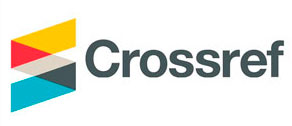ADVANTAGES AND DISADVANTAGES OF EXISTING GRAPHIC IMAGE PROCESSING SOFTWARE
Abstract
When epidemics break out, the demand for doctors significantly outstrips supply, leading to increased work pressures. During the diagnosis, the question arises about the volumes occupied by graphical information that doctors need to make a diagnosis. The use of large amounts of information can include diagnostics such as the detection of lung cancer or strokes based on computed tomography, assessment of the risk of sudden cardiac death or other heart diseases based on an electrocardiogram of the heart, classification of skin diseases based on the image of the pool of lesions, finding indicators of diabetic retinopathy, and others.
By means of computed tomography, structural changes in the lungs are established, and also a comprehensive study of internal organs is carried out, the presence of tumors, pools of inflammation, vascular deformation, etc. is established. The average size of one such snapshot is up to 1 GB, which does not allow storing data for a long time. Storage of images is necessary to track the course of the disease and establish the causes of its occurrence.
The paper discusses various methods of image compression, from regular jpeg to fractal compression and the use of neural networks for compression. Their disadvantages and advantages are given, allowing to give recommendations for the appropriateness of their use in certain areas of research. The results of testing different approaches to the classification of images based on real and artificial images of patients with coronavirus disease are presented.
A review of the developed systems, the establishment of their advantages and disadvantages provide the prerequisites for the creation and development of new compression and classification algorithms for images, devoid of such disadvantages as the impossibility of choosing the quality of the original image, compression method and classification. The development of such software will greatly simplify the work of doctors and will allow storing medical images necessary for further work.
Keywords: tomogram, image classification, image compression, shortcomings of compression methods, comparison of compression methods.




